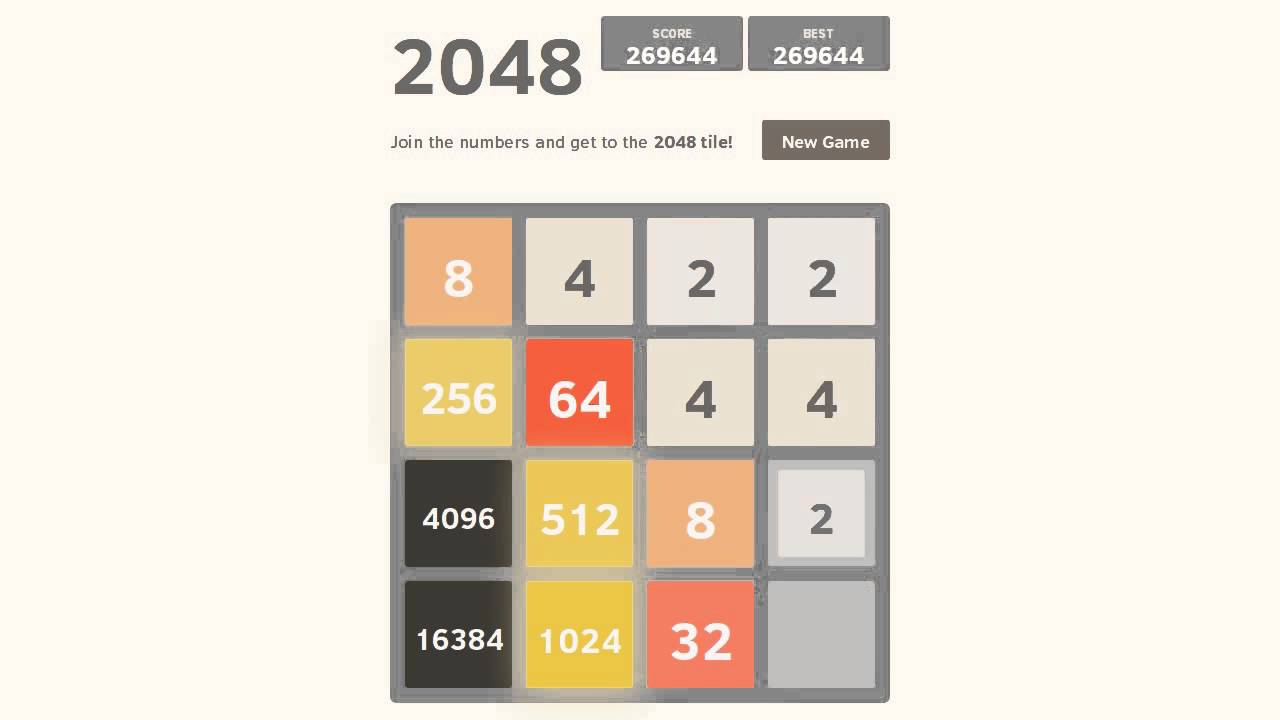2048 is one of my favorite games. The mechanics of this game include a 4×4 grid and tiles that have values that are powers of two on them (2, 4, 8, 16, etc.) and are generated by combining two equal tiles. The game is played on a computer or a mobile phone, so tiles are combined by swiping or using the keyboard arrows to shift all the tiles as far as possible up, down, left or right. When these collide, they combine into one that has the value of the two previous equal values added together (so making two 16 tiles collide would form one 32 tile). Each time the player swipes or clicks on one of their arrows, a new 2 or 4 tile appears at a random empty location on the grid, making the board more crowded and therefore making it harder to make matching tiles colide. The goal of the game is to form a 2048 tile in this manner without having the 4×4 grid fill up with tiles.
The dynamics of this game involve finding strategies that allow the player to keep the tiles organized in such a way that it is easy to merge matching tiles in order to prevent the board from becoming too crowded. This includes finding strategies to reorganize the board when a tile pops-up in an unexpected or inconvenient position and breaks the pattern of organization of the grid. It is also important to organize the board in a way that the new 2 and 4 tiles that pop up with every swipe will pop up near other 2 and 4 tiles they can me combined with so that these don’t build up and fill up the grid. My personal strategy involves building up the tiles in one of the edes with the greatest tile in one corner and the rest next to it in decreasing order, so that they can always be merged in sequence building up to the greatest tile. This allows me to always reach the 2048 tile and then use the “continue playing” option to reach the 4096, 8192 and even the 16384 (my record), but there are many different ways to solve this puzzle and there are likely to be strategies that would allow me to surpass this record. An important dynamic of the game is how with time/number of moves, the game becomes increasingly difficult, as you have to build up tiles with greater numbers that require the combination of many more small tiles in the same 4×4 sized grid. This number of tiles and therefore the difficulty of the game increases exponentially every time you generate a new largest value tile, and so do the stakes, as loosing all the progress made so far becomes increasingly dreadful.
The main aesthetics that draw us into this game are submission and challenge. Once the player has devised their strategy and is progressively building tiles with greater numbers by combining them, the game 2048 can be very relaxing and a great way to turn your brain off and kill time. Since it is easy to play, it becomes a somewhat mindless exercise and the player loses themselves in this task that they don’t have to think too hard about most of the time. The game becomes a challenge when the grid becomes too crowded and it becomes hard to make matching tiles collide because there are other tiles between them. The new tiles that show up with each move now become obstacles and the player needs to think harder about every move in order to avoid filling up the last empty spaces without being able to combine the new tiles that are poping off and loosing. Every time the player looses, there is a challenge in changing up their strategy before starting to play again in order to reach a better outcome next time.



